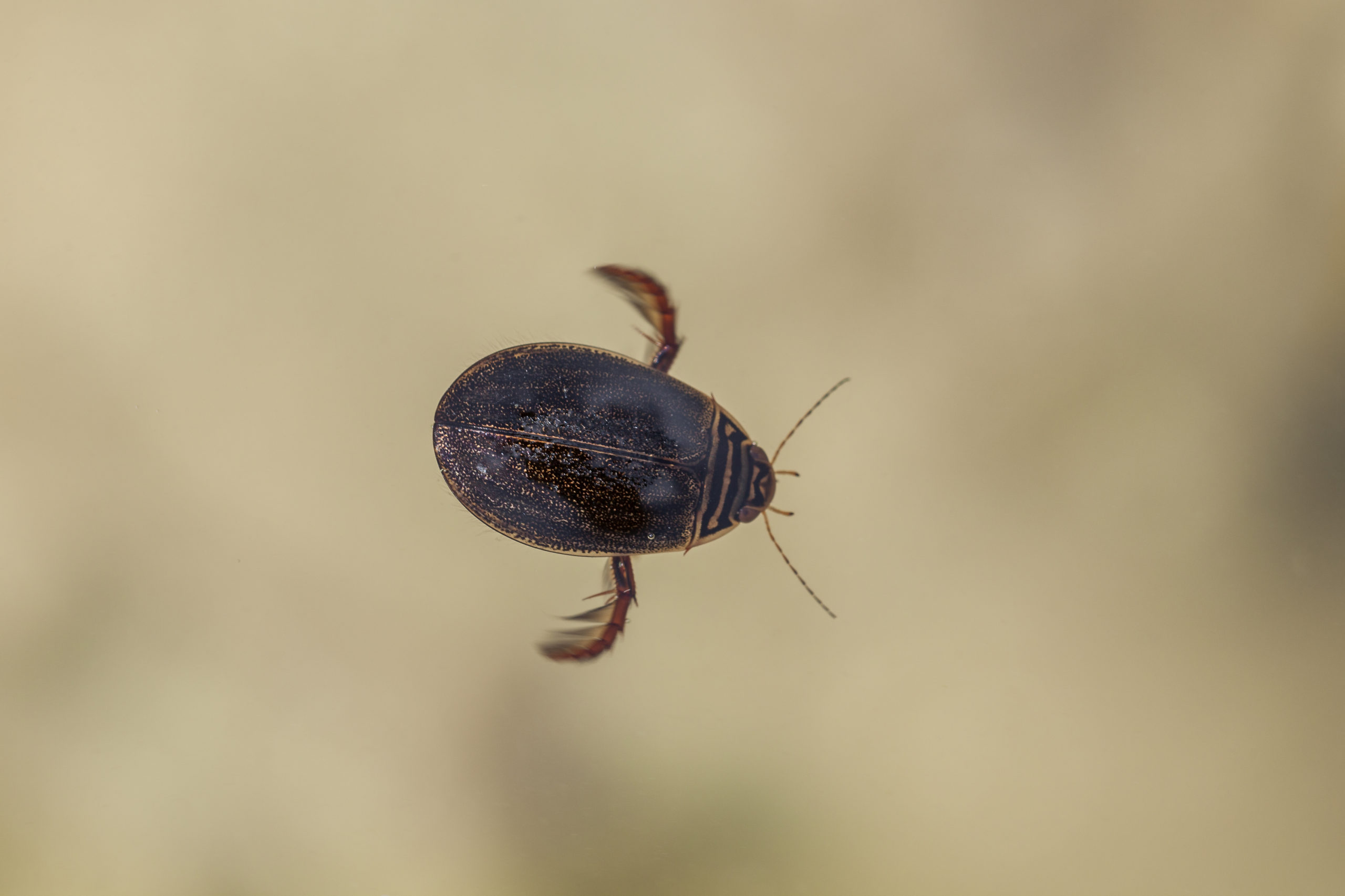The Bug that Walks Under Water
The Bug that Walks Under Water
Water Walkers
Thanks to surface tension, there are a number of insects that can walk, scoot, or skate on top of sources of water. This can include some ants, spiders, water skaters, and even some beetles. However, one beetle in particular breaks the mold with a crazy special ability: walking under the water.

Scavenger Beetles
Just beneath the water’s surface, the scavenger beetle scurries around upside down as though the underside of the surface of the water was a floor. “The moment I realized the beetle was moving across the underside of the water’s surface,” said behavioral biologist John Gould, “I knew I had found something truly bizarre.”
Along with a team of researchers, Gould began studying the unique beetles. Known scientifically as Hydrophiloidea, these beetles are part of a superfamily with roughly 3,200 different species. They are water-dwelling creatures with dark, smooth, oval-shaped bodies measuring up to 4cm in length. But how do they manage this acrobatic act of underwater walking?

The Secret to Walking Underwater
Along with a team of researchers, Gould began studying the unique beetles. The team began by filming the insects as they traveled along their inverted plane. When examining the footage up close, the researchers noticed small collections of air bubbles trapped within the tiny leg hairs of the beetles. These miniscule bubbles helped explain how the beetles may be breathing beneath the surface as well as helping to “pin” them along the inverted surface with the pressure of the air against the surface pressure. Their little footsteps even created what Gould described as “tiny hills” on the surface of the water as they walked or stood in place.

What Could This Mean for Humanity?
As with many natural phenomena, scientists are already considering how these findings could be translated into the creation of different technologies. “We believe that this could further advance robot locomotive capabilities for military or search and rescue purposes,” explains Gould. A technological adhesive that could be implemented for underwater data collections could be extremely useful for temperature gauges, vibration monitors, and other marine biologist devices. “Devices made of these materials could remain at the surface,” says Gould, “while remaining entirely submerged and without piercing through or disrupting the water’s surface, unlike other devices which require a flotation device that sits above the water.”

Citations
Lallensack, R. (2021) Ten scientific discoveries from 2021 that may lead to new inventions, Smithsonian Magazine. The Smithsonian Institution. Available at: https://www.smithsonianmag.com/innovation/ten-scientific-discoveries-from-2021-that-may-lead-to-new-inventions-180979285/ (Accessed: January 13, 2022).
Rogers, K. (no date) Water Scavenger Beetle, Encyclopædia Britannica. Encyclopædia Britannica, inc. Available at: https://www.britannica.com/animal/water-scavenger-beetle (Accessed: January 13, 2022).
Summer is Ending, But Pests are Still Going Strong
Summer is Ending, But Pests are Still Going Strong Summer is Ending, But Pests are Still Going Strong Summary: Summer is coming to [...]
10 Tips for Going Back to School Pest-Free
10 Tips for Going Back to School Pest-Free 10 Tips for Going Back to School Pest-Free Summary: The school year is a busy [...]
What is Bug Spray, Really?
What is Bug Spray, Really? What is Bug Spray, Really? Summary: Bug spray is a great tool for preventing pests during outdoor activities, [...]
The Various Personalities of Stinging Pests
The Various Personalities of 5 Stinging Pests The Various Personalities of 5 Stinging Pests Summary: Stinging insects are among the most common summer [...]
8 Creative Ways to Have a Pest-Free Fourth of July
8 Creative Ways to Have a Pest-Free Fourth of July 8 Creative Ways to Have a Pest-Free Fourth of July Summary: The Fourth [...]
A Simple Guide to Preventing Stinging Pests
A Simple Guide to Preventing Stinging Pests A Simple Guide to Preventing Stinging Pests Summary: Stinging insects are more active in warm weather, [...]

